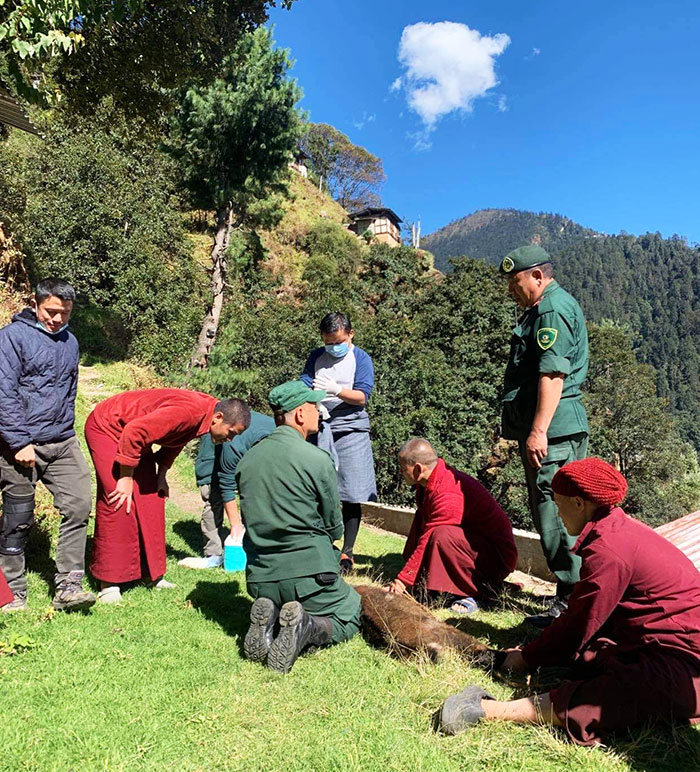Choki Wangmo
Numbers of the regular visitors at the Chagri monastery, Himalayan gorals, locally called as Bja Ra, that found a safe sanctuary near the monastery in the company of friendly monks, are decreasing.

Livestock experts treat a goral
More than 15 Himalayan gorals succumbed to what the experts suspect as foot and mouth (FMD) and peste des petits (PPR) disease within weeks in Chagri monastery. According to eyewitnesses, the gorals dropped dead after they developed lesions on their body. A monk Pema Tshering, said that about 30 gorals used to visit the monastery’s vicinity but due to such infections, many have either died or disappeared into the wild.
Livestock extension officer of Kabesa gewog, Kelzang Dorji said that the lab report is yet to confirm the outbreak of the diseases, which the experts think was spread by goats saved by the tshethar tshogpas. He said the sick animals were provided treatment and antibiotic courses.
FMD is a contagious viral disease that can spread very rapidly of cloven-hoofed animals. It causes fever, followed by the development of vesicles (blisters) chiefly in the mouth and on the feet. PPR, also known as sheep and goat plague, is a highly contagious animal disease affecting domestic and wild small ruminants.
There are about 40 goats in the monastery mostly rescued from the southern dzongkhags where the outbreak of FMD is rampant. Within days, four goats were reported dead.
In an earlier interview, Agriculture Minister Yeshey Penjor said that the tshethar tshogpas should be responsible and look after the animals rather than letting them stray away. He said that it was difficult for the ministry to monitor the tshogpas since they were not officially registered.
Last year, the ministry urged the tshogpas to register as Non-Government Organisation with the Civil Society Organisation Authority to minimise the impact of rescued animals on the environment, crops, incidences of disease spread as well as to ensure welfare of the animals.
The movement of rescued animals from one dzongkhag to another must be done with prior approval from the Bhutan Agriculture and Food Regulatory Authority as per the Guideline on Animal Tshethar Practices 2018.
A newly introduced FMD can infect up to 90 percent of an animal herd and kills anywhere up to 70 percent of infected animals. The PPR virus does not infect humans.
There were no past records of the outbreak in the area.
Gorals are categorised under Near Threatened species according to the International Union for Conservation of Nature Red List of Threatened Species.

